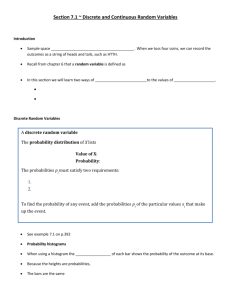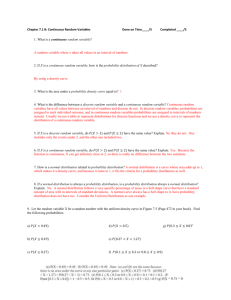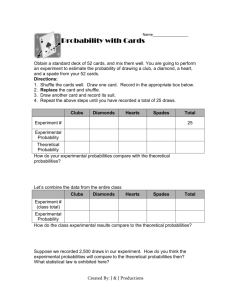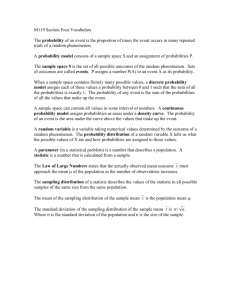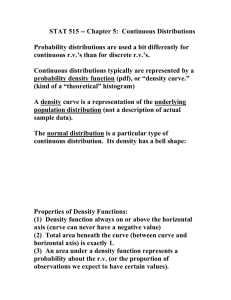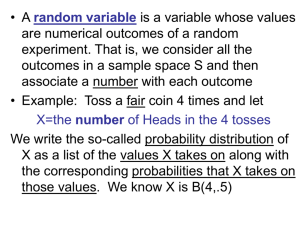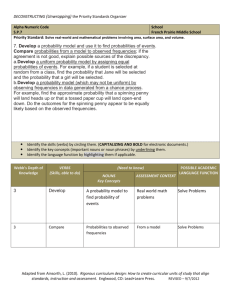P(X = c)
advertisement
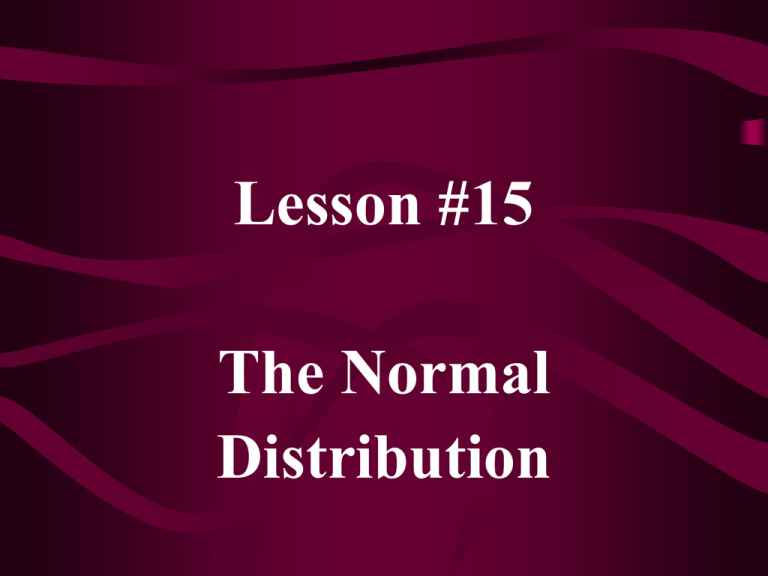
Lesson #15 The Normal Distribution For a truly continuous random variable, P(X = c) = 0 for any value, c. Thus, we define probabilities only on intervals. P(X < a) P(X > b) P(a < X < b) f(x) is the probability density function, pdf. This gives the height of the “frequency curve”. Probabilities are areas under the frequency curve! f(x) is the probability density function, pdf. This gives the height of the “frequency curve”. Probabilities are areas under the frequency curve! Remember this!!! P(a < X < b) P(X < a) P(X > b) f(x) a b x P(X < a) = P(X < a) = F(a) P(X > b) = 1 - P(X < b) = 1 - F(b) P(a < X < b) = P(X < b) - P(X < a) = F(b) - F(a) If X follows a Normal distribution, with parameters m and s2, we use the notation X ~ N(m , s2) f(x) = 1 2 s E(X) = m - e x - m 2 s2 2 -<x< Var(X) = s2 m-s m m+s A standard Normal distribution is one where m = 0 and s2 = 1. This is denoted by Z Z ~ N(0 , 1) -3 -2 -1 0 1 2 3 Table A.3 in the textbook gives upper-tail probabilities for a standard Normal distribution, and only for positive values of Z. P(Z > 1) -3 -2 -1 0 1 2 3 Table C in the notebook gives cumulative probabilities, F(x), for a standard Normal distribution, for –3.89 < Z < 3.89. P(Z < -1) -3 -2 -1 0 1 2 3 P(Z < 1.27) = .8980 -3 -2 -1 0 1 2 1.27 3 P(Z < -0.43) = .3336 = P(Z > 0.43) -3 -2 -1 0 1 -0.43 0.43 2 3 P(Z > -0.22) = 1 – P(Z < -0.22) = 1 – .4129 = .5871 -3 -2 -1 0 -0.22 1 2 3 P(-1.32 < Z < 0.16) = P(Z < 0.16) - P(Z < -1.32) = .5636 – .0934 = .4702 -3 -2 -1 -1.32 0 1 0.16 2 3 Find c, so that P(Z < c) = .0505 c = -1.64 .0505 -3 -2 -1 c 0 1 2 3 Find c, so that P(Z < c) .9 c 1.28 .9 -3 -2 -1 0 1 2 c 3 Find c, so that P(Z > c) = .166 P(Z < c) = 1 - .166 = .834 .834 -3 c = 0.97 .166 -2 -1 0 1 c 2 3 ZP is the point along the N(0,1) distribution that has cumulative probability p. Z.0505 = -1.64 Z.9 1.28 p -3 Z.975 = 1.96 -2 ZP -1 0 1 2 3
